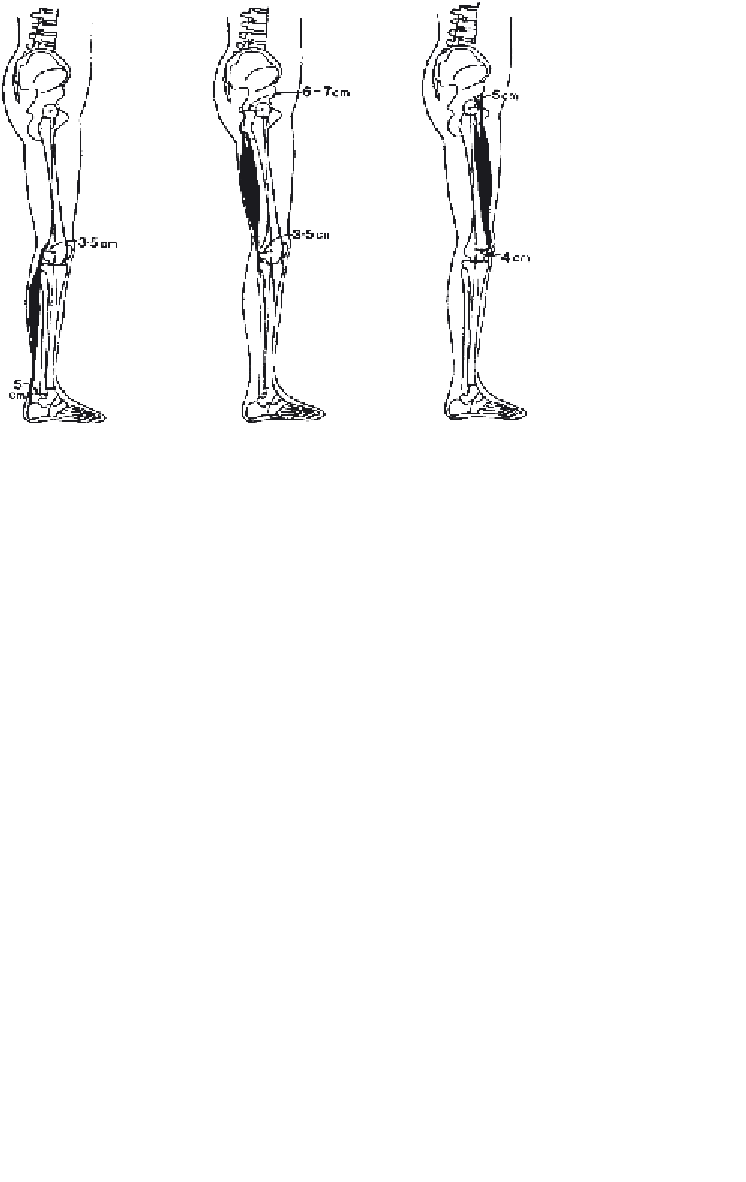Biomedical Engineering Reference
In-Depth Information
Figure 4.10
Three major biarticulate muscles of the lower limb. Shown are the
gastrocnemii, hamstrings, and rectus femoris, and their moment-arm lengths at their
proximal and distal ends. These moment-arms are critical to the functional role of these
muscle groups during weight bearing; see the text for details.
contribute, along with all the uniarticulate extensors, to defending against
a gravity-induced collapse. The algebraic summation of all three moments
during stance phase of gait has been calculated and has been found to be
dominantly extensor (Winter, 1984). This summation has been labeled the
support moment and is discussed further in Section 5.2.6.
4.4
PROBLEMS BASED ON ANTHROPOMETRIC DATA
1. (a)
Calculate the average body density of a young adult whose height is
1.68 m and whose mass is 68.5 kg. Answer: 1.059 kg/1.
(b)
For the adult in (a), determine the density of the forearm and use
it to estimate the mass of the forearm that measures 24.0 cm from
the ulnar styloid to the elbow axis. Circumference measures (in cm)
taken at 1-cm intervals starting at the wrist are 20.1, 20.3, 20.5,
20.7, 20.9, 21.2, 21.5, 21.9, 22.5, 23.2, 23.9, 24.6, 25.1, 25.7, 26.4,
27.0, 27.5, 27.9, 28.2, 28.4, 28.4, 28.3, 28.2, and 28.0. Assuming the
forearm to have a circular cross-sectional area over its entire length,
calculate the volume of the forearm and its mass. Compare the mass
as calculated with that estimated using averaged anthropometric data
(Table 4.1).
Answer:
Forearm density
=
1.13 kg/1; volume
=
1.174
1; mass
=
1.33 kg. Mass calculated from Table 4.1
=
1.10 kg.










Search WWH ::

Custom Search